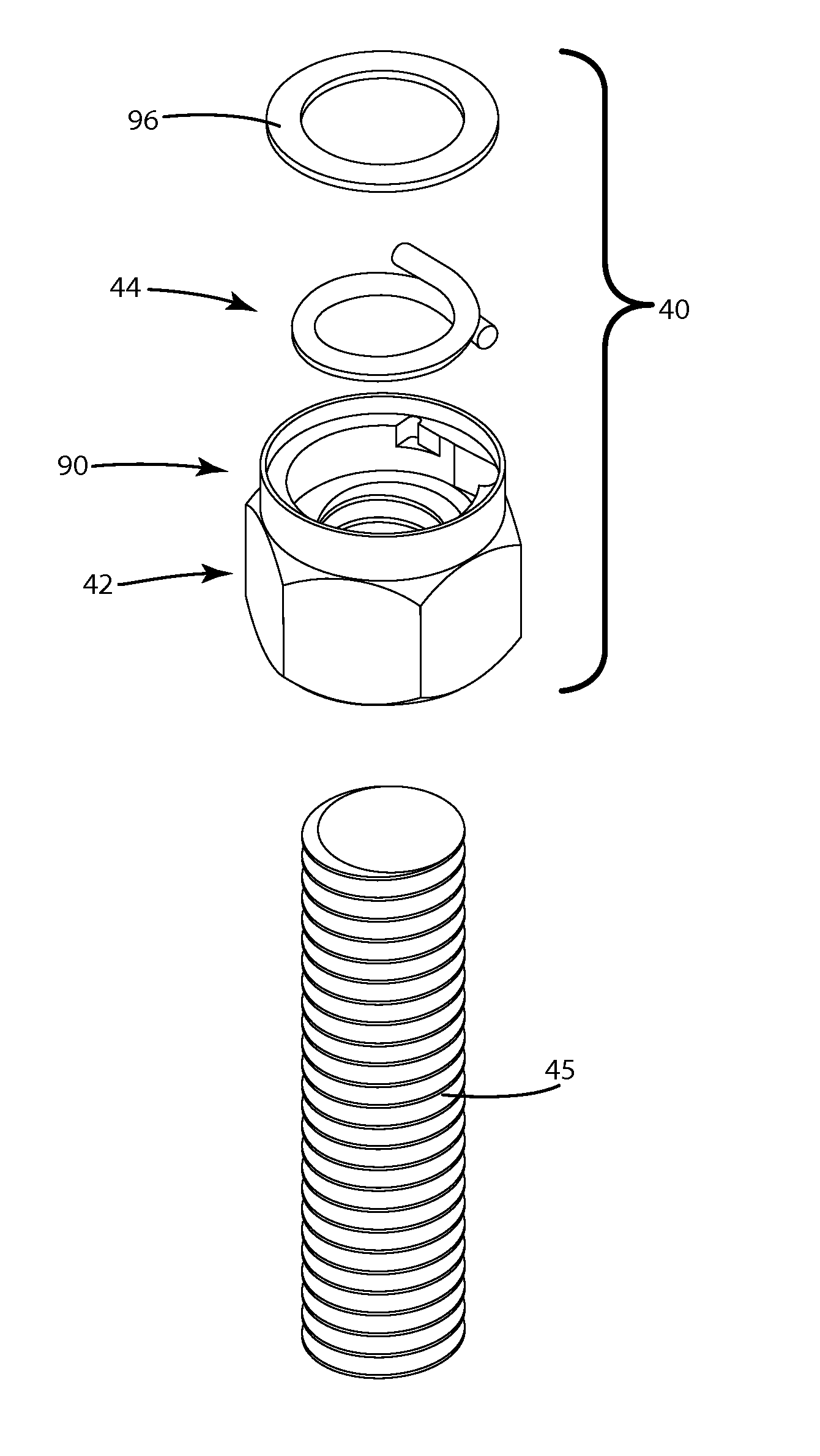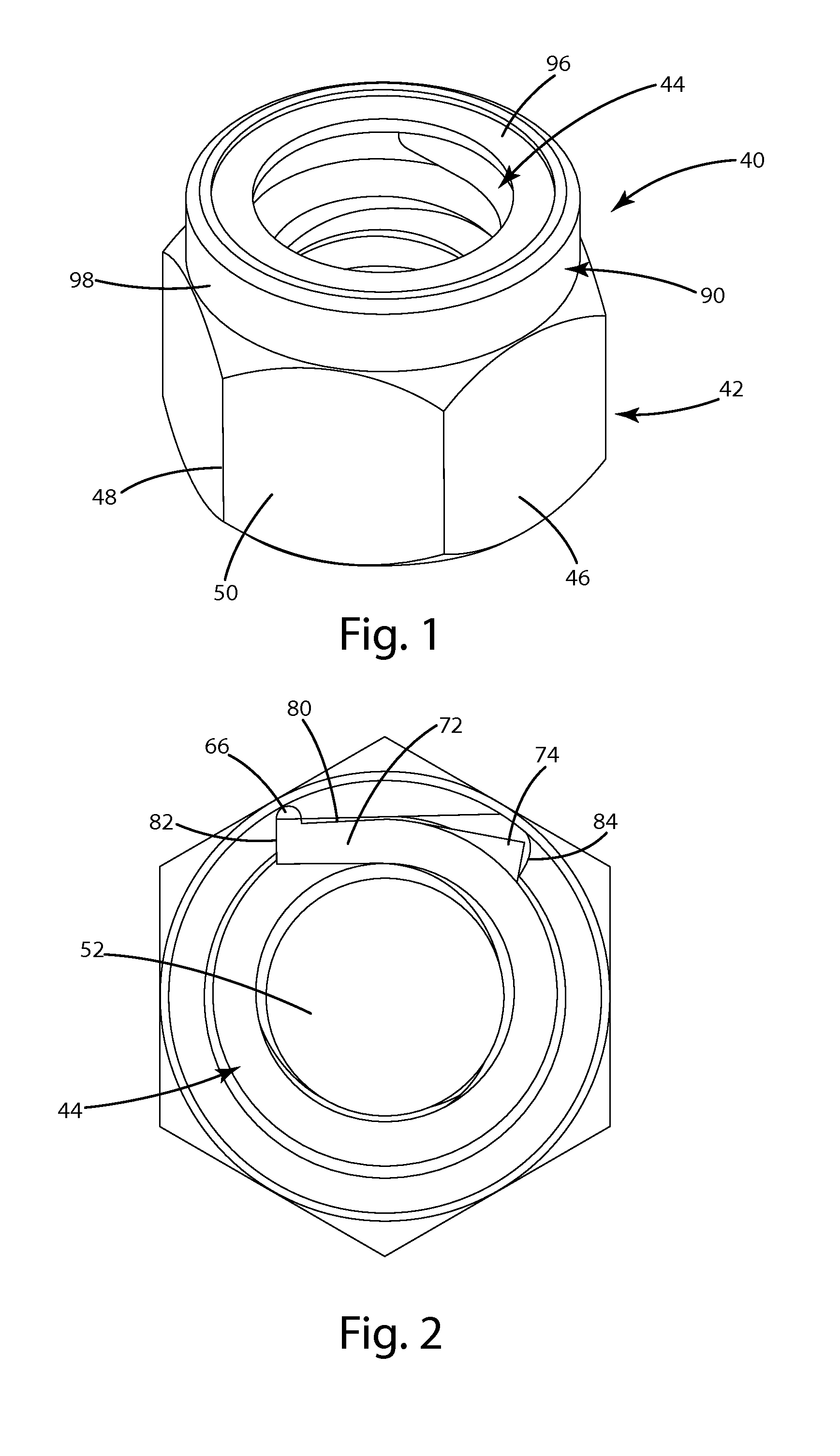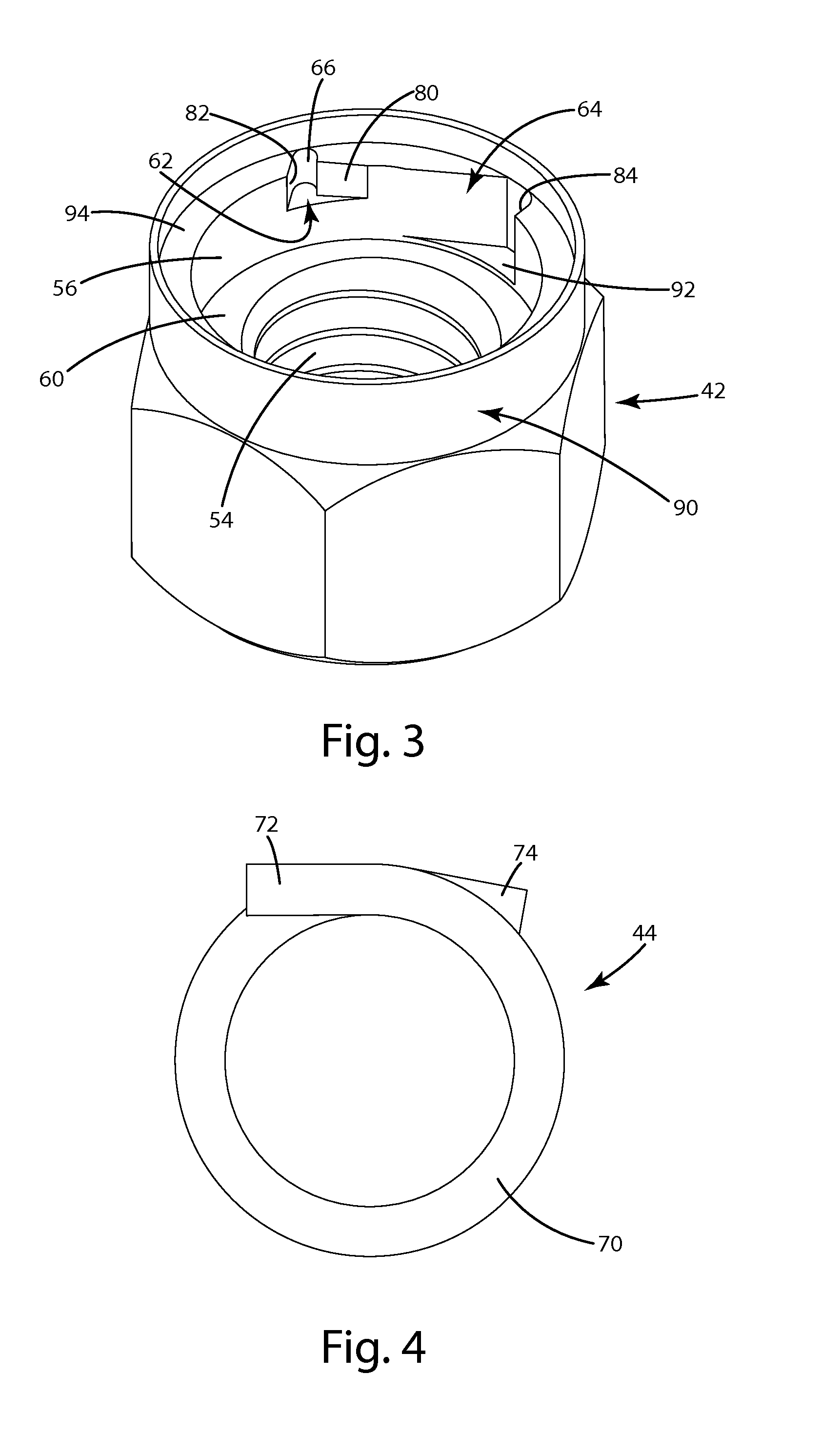Locking threaded fastener
a threaded fastener and locking technology, applied in the direction of threaded fasteners, fastening means, screws, etc., can solve the problems of relatively low installation torque, unsuitability of the lock nut for its intended application, and loosening of the element's grip, so as to improve the balance of simplicity, cost, and performance. , the effect of improving the structure and function
- Summary
- Abstract
- Description
- Claims
- Application Information
AI Technical Summary
Benefits of technology
Problems solved by technology
Method used
Image
Examples
first embodiment
I. First Embodiment
[0021]A locking threaded fastener constructed in accordance with a first embodiment of the invention is illustrated in FIGS. 1-5 and generally designated 40. Though shown in FIGS. 1-5 as a retaining nut or a lock nut, the concepts of the present invention can be incorporated into a variety of fasteners as will be recognized by those skilled in the art.
[0022]The threaded fastener 40 includes a body 42 and a locking element, spring, or band 44. The body 42 includes a hex-shaped outer portion 46 configured to be engaged and driven by a conventional driving tool (not shown). The hex-shaped portion 46 includes a plurality of corners 48 and a plurality of flats 50 extending therebetween. Alternatively, the body 42 may be square, otherwise polygonal, or any other shape. The body 42 may also be shaped to be engaged by any conventional driving tool, now known or later developed.
[0023]The body 42 defines a bore 52, which is at least partially threaded along its length. As p...
second embodiment
II. Second Embodiment
[0040]A locking threaded fastener constructed in accordance with a second embodiment of the invention is illustrated in FIGS. 6-10 and generally designated 140. The threaded fastener 140 is structurally and functionally similar to the previously described threaded fastener 40. Consequently, each element of the threaded fastener 140 is identified by the same designating numeral as the corresponding element in the threaded fastener 40 with the exception that the numeral begins with a 1. For example, the locking band 144 in the threaded fastener 140 corresponds to the locking band 44 in the threaded fastener 40. Only the elements that differ significantly are described below.
[0041]As shown in FIGS. 7-9, the threaded fastener 140 includes a first recess 162 and a second recess 164 with different sizes and shapes than the recesses 62, 64 in the first embodiment. The different recesses 162, 164 may result in a different removal torque for the threaded fastener 140. Fo...
third embodiment
III. Third Embodiment
[0042]A locking threaded fastener constructed in accordance with a third embodiment of the invention is illustrated in FIG. 11 and generally designated 240. The threaded fastener 240 is structurally and functionally similar to the previously described threaded fastener 40. Consequently, each element of the threaded fastener 240 is identified by the same designating numeral as the corresponding element in the threaded fastener 40 with the exception that the numeral begins with a 2. Only the elements that differ significantly are described below.
[0043]The threaded fastener 240 includes a cover 296 that encloses the locking element 244. As shown in FIG. 11, the cover 296 includes a lip portion 220 and a cover portion 222. To accommodate the portion of a threaded member 245 extending through the threaded fastener 240, the cover portion 222 may extend outward away from the lip portion 220. The distance the cover portion 222 extends away from the lip portion 220 may b...
PUM
 Login to View More
Login to View More Abstract
Description
Claims
Application Information
 Login to View More
Login to View More - R&D
- Intellectual Property
- Life Sciences
- Materials
- Tech Scout
- Unparalleled Data Quality
- Higher Quality Content
- 60% Fewer Hallucinations
Browse by: Latest US Patents, China's latest patents, Technical Efficacy Thesaurus, Application Domain, Technology Topic, Popular Technical Reports.
© 2025 PatSnap. All rights reserved.Legal|Privacy policy|Modern Slavery Act Transparency Statement|Sitemap|About US| Contact US: help@patsnap.com



